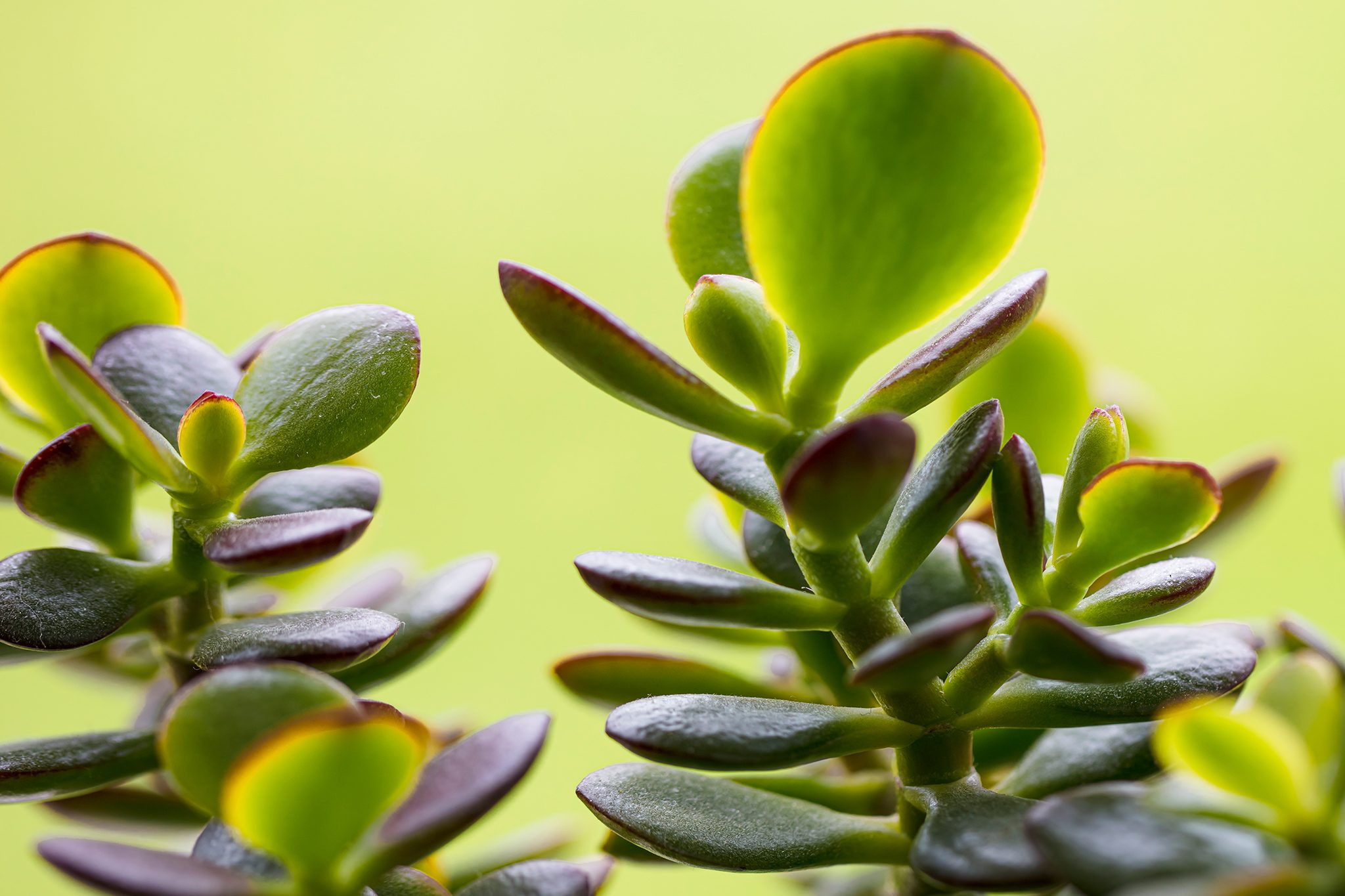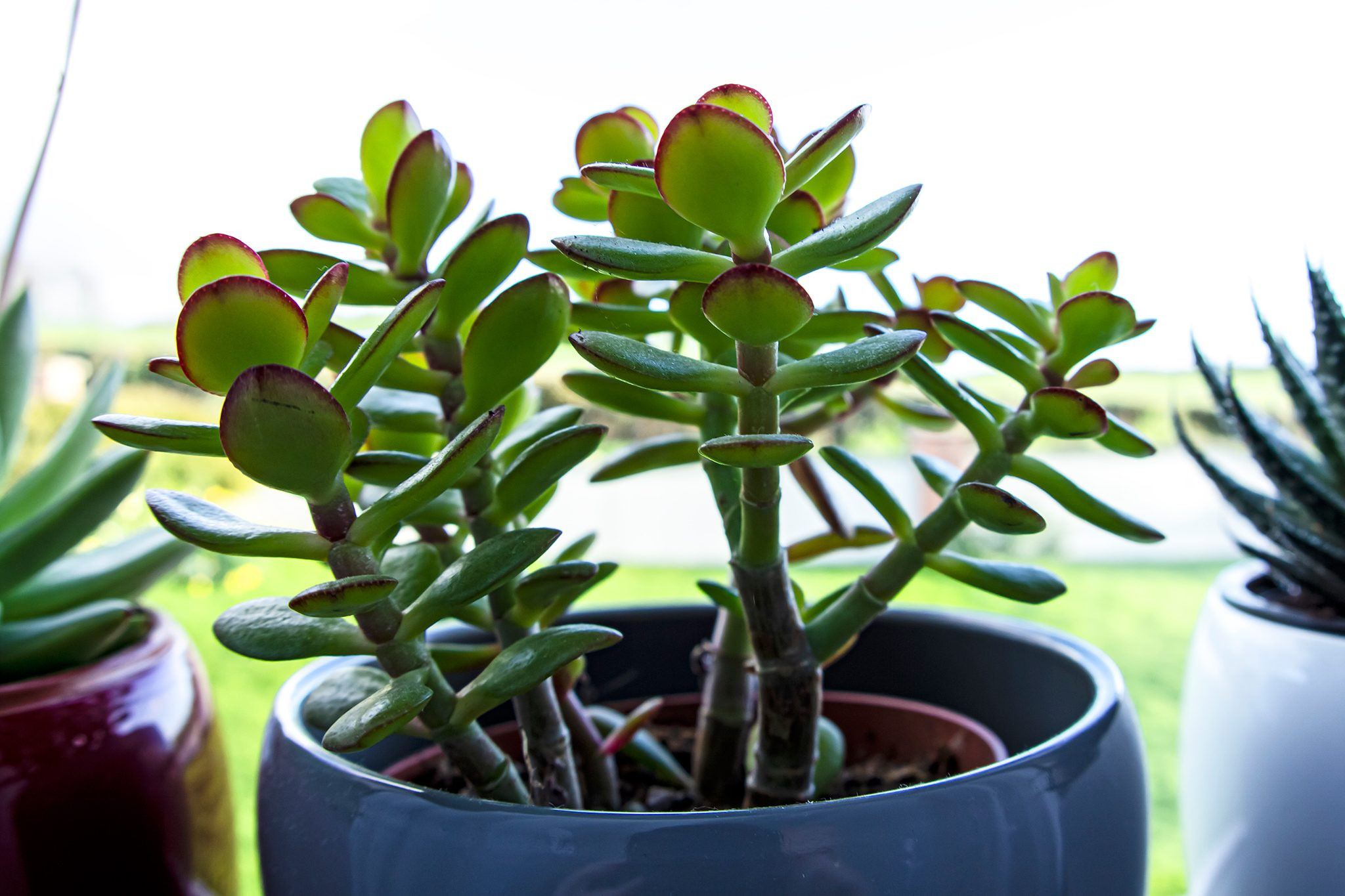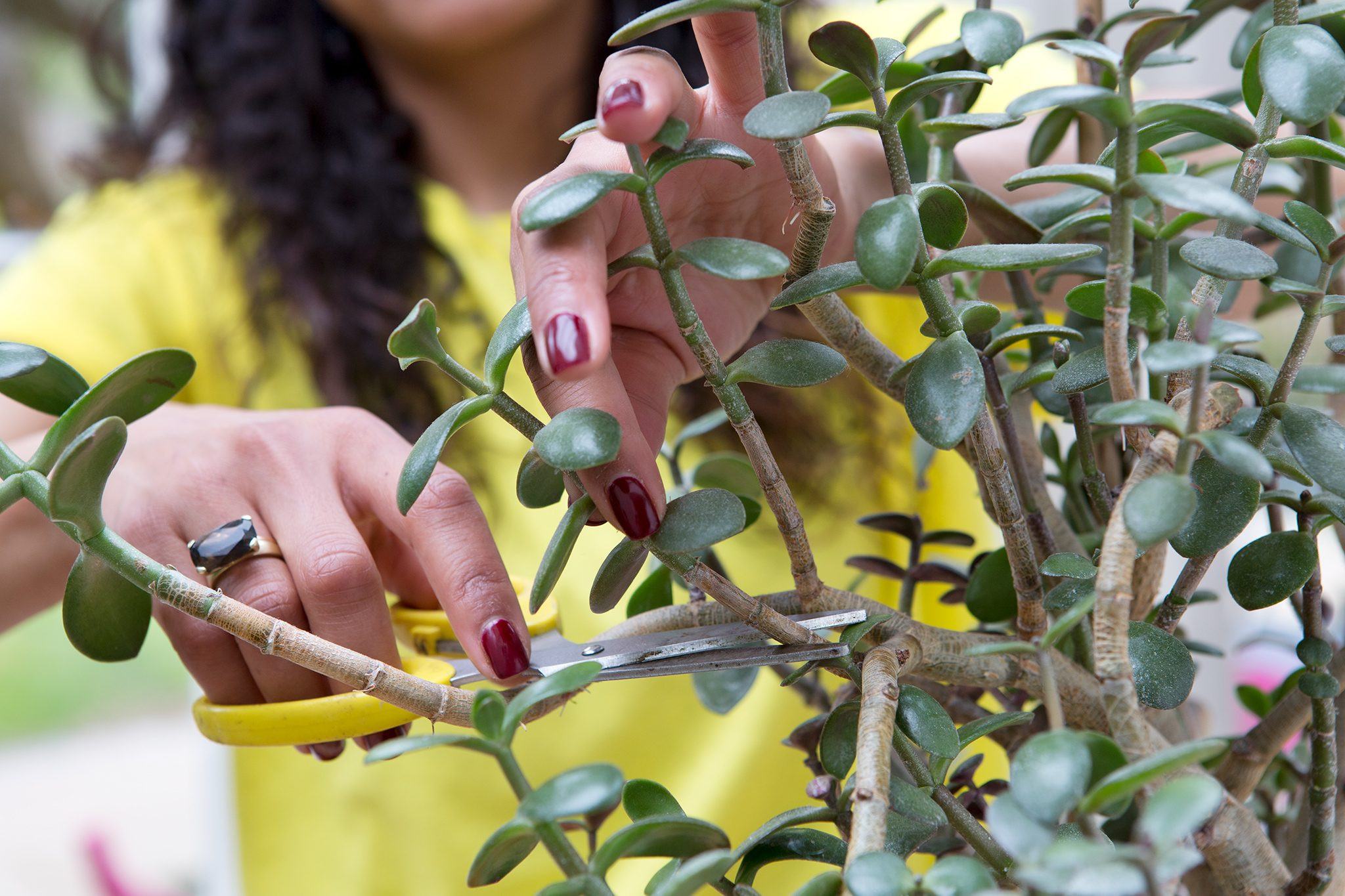For centuries, the Money Tree, or Crassula ovata, has been revered in homes and businesses alike as a symbol of prosperity and good fortune. More than just a decorative succulent, this resilient plant, often called jade plant, is surprisingly easy to grow and maintain, making it an excellent choice for both seasoned plant enthusiasts and beginners looking to add a touch of green – and perhaps a bit of financial luck – to their lives.
Whether you’re drawn to its symbolic meaning or simply appreciate its sculptural beauty, understanding how to properly care for your money tree (Crassula ovata) is key to ensuring it thrives. This comprehensive guide will walk you through everything you need to know, from planting and watering to propagation and troubleshooting, empowering you to cultivate a flourishing money tree that can potentially last for generations.
Where to Grow Your Money Tree Crassula
 Crassula ovata. Getty Images
Crassula ovata. Getty Images
Crassula ovata in a bright, sunny indoor location, showcasing its vibrant green leaves.
The Money Tree (Crassula ovata) is native to South Africa and thrives in conditions that mimic its natural habitat: bright, sunny, and relatively dry. When growing indoors, positioning your Crassula ovata in the right spot is crucial.
Light: Money trees are sun-loving plants and require plenty of bright, indirect sunlight to flourish. Aim for a location that receives at least 4-6 hours of sunlight per day. A south-facing or west-facing window is ideal. While they can tolerate some direct morning sun, harsh afternoon sun can scorch their leaves, especially during peak summer months. Insufficient light can lead to leggy growth and faded leaf color, diminishing the plant’s overall health and aesthetic appeal.
Temperature: Average room temperatures (65-75°F or 18-24°C) are perfect for your Crassula ovata during the growing season (spring and summer). In the winter, they appreciate a cooler period of dormancy, with temperatures dropping to around 50-55°F (10-13°C). This cooler period is important for stimulating future growth and can even encourage flowering in mature plants. Avoid placing your money tree near drafts or heating vents, as sudden temperature fluctuations can stress the plant.
Planting Your Money Tree Crassula
Choosing the right potting mix and container is essential for the health of your Money Tree (Crassula ovata). As succulents, they are prone to root rot if their roots sit in soggy soil.
Potting Mix: Use a well-draining potting mix specifically formulated for cacti and succulents. These mixes are typically coarser and contain ingredients like perlite, pumice, or sand, which improve drainage and aeration. You can also create your own mix by combining regular potting soil with perlite or horticultural sand in a 1:1 ratio. Avoid using heavy garden soil, as it retains too much moisture.
Pot Container: Select a pot with drainage holes at the bottom to allow excess water to escape. Terracotta pots are an excellent choice because they are porous, allowing for better airflow and moisture evaporation, which is beneficial for succulents. The pot size should be proportionate to the size of your plant. When repotting, typically move to a pot that is only slightly larger than the previous one. Overpotting (using a pot that is too large) can lead to excess moisture retention and root rot.
Caring for Your Money Tree Crassula
 2048×1365-Crassula-ovata-SEO-GettyImages-1212355758
2048×1365-Crassula-ovata-SEO-GettyImages-1212355758
Close-up of Crassula ovata leaves, highlighting their fleshy texture and vibrant green color, indicating a healthy plant.
Proper watering, feeding, and occasional repotting are key to maintaining a healthy and vibrant Money Tree (Crassula ovata).
Watering: The most common mistake in Crassula ovata care is overwatering. Money trees are drought-tolerant succulents that store water in their leaves and stems. Water thoroughly only when the top 1-2 inches of soil are completely dry. A good way to check is to stick your finger into the soil. When you water, water deeply until water drains out of the drainage holes. Then, allow the soil to dry out completely before watering again. Reduce watering significantly during the winter months when the plant is in its dormant period. Overwatering can lead to root rot, which is often fatal to Crassula ovata.
Fertilizing: Money trees are not heavy feeders. Fertilize sparingly, only during the active growing season (spring and summer), with a diluted balanced liquid fertilizer or a fertilizer specifically formulated for succulents. Feed every 2-3 months, using half the recommended strength on the fertilizer packaging. Avoid fertilizing during the fall and winter months.
Repotting: Crassula ovata are slow growers and do not need frequent repotting. Repot every 2-3 years, or when the plant becomes root-bound (roots circling the pot). Spring is the best time for repotting. Gently remove the plant from its pot, loosen any circling roots, and replant it in fresh succulent potting mix in a slightly larger pot if needed. If your plant becomes too large to repot, you can refresh the topsoil by carefully scraping away the top few inches of old soil and replacing it with fresh potting mix.
Propagating Your Money Tree Crassula
 Taking take cutting cuttings of Crassula Jade plant houseplant Houseplants with Isabelle Palmer 270417 27042017 27/04/17 27/04/2017 27 27th April 2017 Spring photographer Sarah Cuttle horizontal
Taking take cutting cuttings of Crassula Jade plant houseplant Houseplants with Isabelle Palmer 270417 27042017 27/04/17 27/04/2017 27 27th April 2017 Spring photographer Sarah Cuttle horizontal
Hands taking a stem cutting from a Crassula ovata, demonstrating a simple method of money tree propagation.
Propagating Money Trees (Crassula ovata) is remarkably easy, making it a rewarding way to expand your collection or share these lucky plants with friends and family. Stem cuttings are the most straightforward method.
Stem Cuttings:
- Take a Cutting: Using clean, sharp scissors or pruning shears, cut a healthy stem section that is about 3-4 inches long. Choose a stem with at least a few leaves.
- Callus the Cutting: Remove the leaves from the bottom inch of the cutting. Place the cutting in a dry, shaded location for a few days to allow the cut end to callus over. This prevents rot when planted.
- Rooting: You can root Crassula ovata cuttings in water or directly in soil.
- Water Rooting: Place the cutting in a glass of water, ensuring only the bottom part of the stem is submerged. Change the water every few days. Roots should appear within a few weeks. Once roots are about an inch long, plant the cutting in succulent potting mix.
- Soil Rooting: Plant the calloused cutting directly into a small pot filled with succulent potting mix. Water lightly to moisten the soil.
- Care for New Plants: Keep the cuttings in a warm, bright location, but avoid direct sunlight initially. Water sparingly until they establish roots and show new growth.
Leaf Cuttings: While slower, Crassula ovata can also be propagated from leaves. Gently twist off healthy, plump leaves from the plant. Allow the cut end of the leaf to callus over for a few days, then place the leaves on top of succulent potting mix. Mist the soil lightly and keep it slightly moist. Roots and tiny plantlets will eventually emerge from the base of the leaf.
Common Problems and Solutions for Money Tree Crassula
Even resilient Money Trees (Crassula ovata) can encounter problems. Recognizing the signs and knowing how to address them will keep your plant healthy.
Yellow Leaves: Often a sign of overwatering. Reduce watering frequency and ensure the plant is not sitting in soggy soil.
Shrivelled Leaves: Indicates underwatering. Increase watering slightly, allowing the soil to dry out between waterings.
Red Edges on Leaves: Typically caused by increased sun exposure. This is generally not harmful and can even enhance the plant’s color.
Leggy Growth: Stems stretching and leaves spaced far apart indicate insufficient light. Move your Crassula ovata to a brighter location.
Leaf Drop: Can be caused by stress from sudden changes in environment, overwatering, or underwatering. Assess your care routine and make adjustments. Natural shedding of older leaves is normal.
Pests: Money trees are relatively pest-resistant, but mealybugs and scale insects can occasionally occur. Treat infestations by wiping pests off with a cotton swab dipped in rubbing alcohol or using insecticidal soap.
Choosing the Right Money Tree Crassula
When selecting a Money Tree (Crassula ovata), look for plants with vibrant, plump, and shiny leaves. Avoid plants with yellowing or shrivelled leaves, soft stems, or signs of pests or diseases. Healthy Crassula ovata should have a sturdy, well-shaped appearance.
For those seeking variety, several Crassula ovata cultivars offer unique leaf shapes and colors:
- Crassula ovata ‘Gollum’: Features unusual tubular leaves resembling fingers or trumpets.
- Crassula ovata ‘Hobbit’: Similar to ‘Gollum’ but with curled-back, red-tinged tubular leaves.
- Crassula ovata ‘Hummel’s Sunset’: Displays striking yellow and red hues on its leaves, especially when exposed to more sunlight.
Embrace the Prosperity of the Money Tree
The Money Tree (Crassula ovata) is more than just a visually appealing succulent; it’s a symbol of prosperity and resilience. With its easy-care nature and air-purifying qualities, it’s a wonderful addition to any home or office. By following this guide, you can cultivate a thriving Crassula ovata that brings beauty, good fortune, and a touch of green to your space for years to come.
